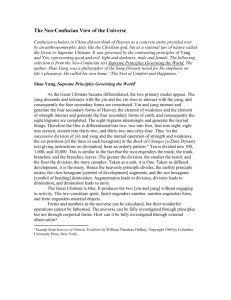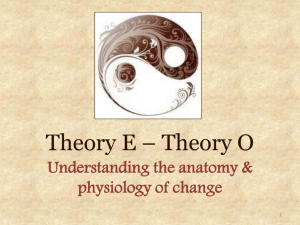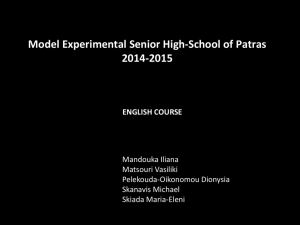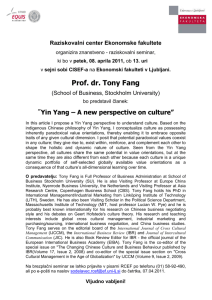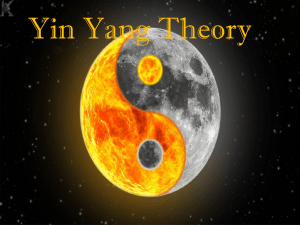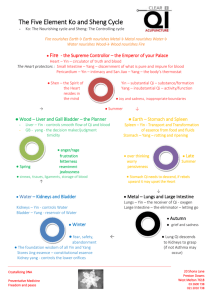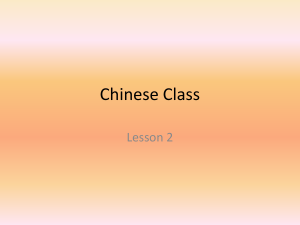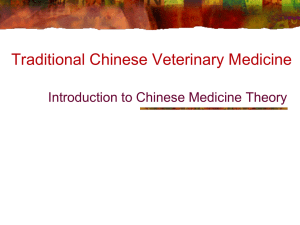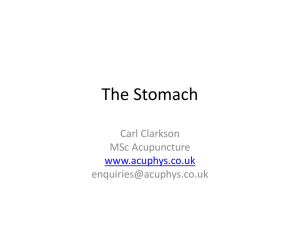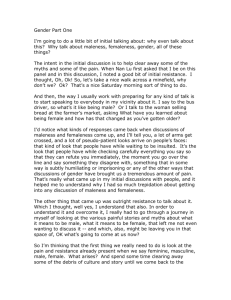Food Energetics Series
advertisement
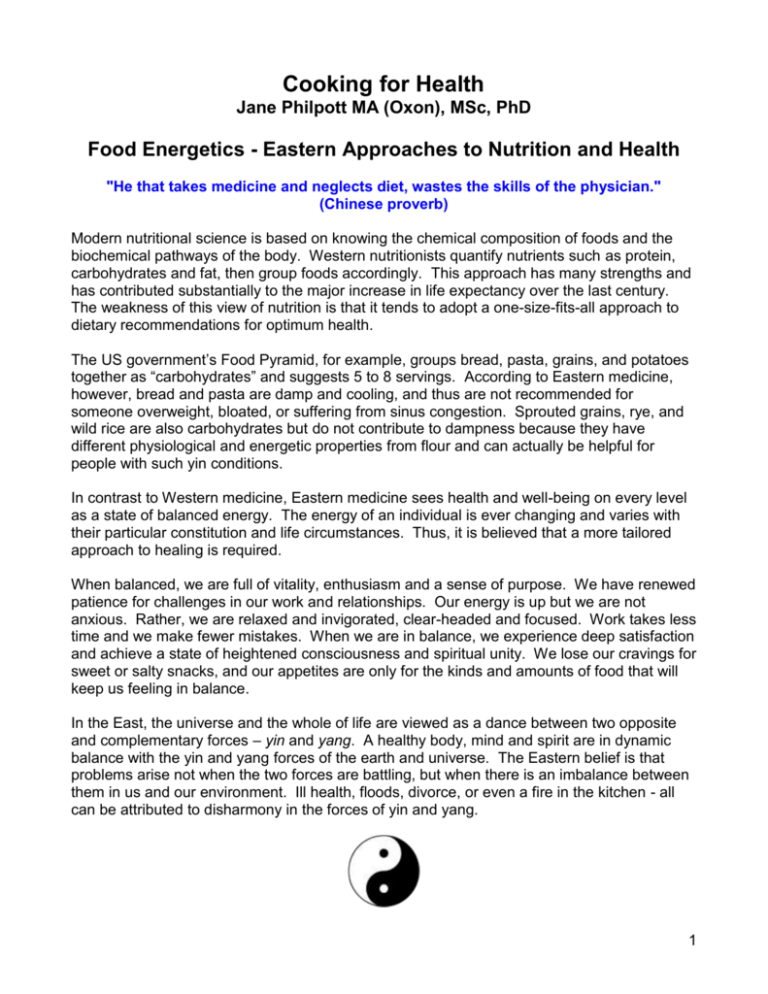
Cooking for Health Jane Philpott MA (Oxon), MSc, PhD Food Energetics - Eastern Approaches to Nutrition and Health "He that takes medicine and neglects diet, wastes the skills of the physician." (Chinese proverb) Modern nutritional science is based on knowing the chemical composition of foods and the biochemical pathways of the body. Western nutritionists quantify nutrients such as protein, carbohydrates and fat, then group foods accordingly. This approach has many strengths and has contributed substantially to the major increase in life expectancy over the last century. The weakness of this view of nutrition is that it tends to adopt a one-size-fits-all approach to dietary recommendations for optimum health. The US government’s Food Pyramid, for example, groups bread, pasta, grains, and potatoes together as “carbohydrates” and suggests 5 to 8 servings. According to Eastern medicine, however, bread and pasta are damp and cooling, and thus are not recommended for someone overweight, bloated, or suffering from sinus congestion. Sprouted grains, rye, and wild rice are also carbohydrates but do not contribute to dampness because they have different physiological and energetic properties from flour and can actually be helpful for people with such yin conditions. In contrast to Western medicine, Eastern medicine sees health and well-being on every level as a state of balanced energy. The energy of an individual is ever changing and varies with their particular constitution and life circumstances. Thus, it is believed that a more tailored approach to healing is required. When balanced, we are full of vitality, enthusiasm and a sense of purpose. We have renewed patience for challenges in our work and relationships. Our energy is up but we are not anxious. Rather, we are relaxed and invigorated, clear-headed and focused. Work takes less time and we make fewer mistakes. When we are in balance, we experience deep satisfaction and achieve a state of heightened consciousness and spiritual unity. We lose our cravings for sweet or salty snacks, and our appetites are only for the kinds and amounts of food that will keep us feeling in balance. In the East, the universe and the whole of life are viewed as a dance between two opposite and complementary forces – yin and yang. A healthy body, mind and spirit are in dynamic balance with the yin and yang forces of the earth and universe. The Eastern belief is that problems arise not when the two forces are battling, but when there is an imbalance between them in us and our environment. Ill health, floods, divorce, or even a fire in the kitchen - all can be attributed to disharmony in the forces of yin and yang. 1 The Chinese symbol for yin is the shady side of a hill, while for yang it is the sunny side. Thus, yin qualities include coolness, dampness, and darkness, relative to the yang qualities of warmth, dryness, and light. Winter is yin, while summer is yang, and night is yin while day is yang. Arthritis made worse by cold weather is a yin condition. A red, inflamed rash brought on by heat is a yang condition. A ruddy-faced, irritable man with high blood pressure is relatively yang. An anaemic, melancholy woman is relatively yin. In Eastern medicine, the concept of yin and yang extends to food and diet. Indeed, food choice is considered paramount in achieving balanced energy. Certain foods are thought to have yin or cooling, dispersing properties, whilst others have warm, gathering yang properties. By observing our bodies and understanding the energetics of food, we can make food and activity choices that speed our bodies’ healing processes. Imbalance can come from an excess, or deficiency, of yin or yang. By understanding patterns of imbalance in yin and yang, we can make food choices that help to restore balance. Our condition is always changing so to achieve balance, we need to adjust our diet with the seasons and with our individual life situation. For example, one typical pattern of yin excess is coldness. This is characterized by: a tendency to feel chilled and a desire to dress warmly; clear urine, pale and/or loose stools; soft fleshy muscles; tiredness and the need for a lot of sleep; a tendency to feel depressed; a quiet and withdrawn nature; and a deterioration of health in cold weather. A cold pattern often occurs in vegetarians or in those who eat primarily raw foods, especially when they live in the cold. A raw food diet is thus likely to be unhelpful for healing a person with a ‘cold’ condition, particularly in a cold climate, whereas it may be perfect for a person with an excess yang condition, living in a hot, dry place. For these ‘cold’ people, regular, warming aerobic exercise is essential. Healing food choices include oily fish, free-range eggs and maybe even small quantities of organic meat. Beneficial vegetables include slow-cooked root vegetables, baked winter squash, onions, and mustard greens. Nuts and seeds are warming, as are cinnamon, garlic, ginger, turmeric, and pepper. Helpful grains include oatmeal, millet, and buckwheat. Food and drinks are best eaten cooked and warm. Salads, raw fruits, frozen desserts, pasta, white flour, and iced beverages should be minimized. A new series of “Cooking for Health” classes explores the Eastern concepts of yin and yang and their relationship to the energetics of food and to our own energetic condition. We discuss the energetic properties of different ingredients and learn how these can be modified by cooking style. We become aware of our own constitution and condition and how to balance our energy and accelerate our healing by making appropriate food choices. These classes lay the foundation for more detailed exploration of the healing power of food in relation to specific disease states and the study of food and the Five Element system in oriental medicine. 2 Each class involves 100% hands-on practical cooking in a small, supervised group, combined with teaching of oriental medical theory on the healing power of food. Clear, easy-to-follow presentations and handouts are provided with plenty of opportunity for questions and discussion. Through practical cooking, theory, discussions, individual and group work, participants learn how to create health and well being for mind and body. For further information and bookings please contact Jane Philpott on email: janekphilpott@googlemail.com or telephone 01458 224606. www.cookingforhealth-uk.com 3
